Fantasy Without Cooties
Cheryl Morgan looks at fantasy written by women.
In last issue’s Salon podcast we discussed how some fantasy novels are deliberately targeted at either male or female readers. That appears to be a commercial reality, whether we approve of it or not. But the fact that it happens appears to give rise to another, less supportable phenomenon. There is a fair amount of evidence that many male readers will not try a book by a female writer because they assume that books written by women are written for women. (The opposite does not apply so much as women are generally required to read lots of books by men while at school and thus know that not all of them are written for men.)
Given, then, the fact that many fantasy books by women writers are targeted at the (rather larger) audience of women readers, how is an interested male to find books that are safe to read without risking exposure to that dread disease of “girl cooties”1? Well, the obvious thing to do is get a native guide, so I have taken it upon myself to read a number of novels that I believe are safe for all but the most macho guys to sample. If you are only interested in books about rape and murder, then I’m afraid you are out of luck, because women tend not to write that sort of thing. If, however, you are interested in great plots and characters, superior world building, examination of philosophical ideas and so on, I think you will find the following ladies well worth reading.
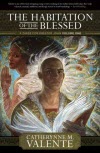 I’ll start with Catherynne M. Valente because she was a Best Novel Hugo nominee last year. That should have alerted a lot of people to her work. Her latest novel, The Habitation of the Blessed [Purchase], riffs off the medieval myth of Prester John. In 1165 the courts of Europe were set a-buzzing by a letter to the Emperor of Byzantium supposedly written by a Christian prince called John who ruled a fabulous and wealthy kingdom in the far east. Much effort was expended (largely, I suspect, by treasure hunters) on finding this place called Pentexore and forging an alliance with a far-flung outpost of Christendom. In our world, Prester John is generally accepted to be a myth, but in the world of Valente’s novel a group of monks led by Hiob Von Luzern come across what they believe to be the remains of Pentexore while searching for the source of the Indus river in the Himalayas. The year is 1699, and Prester John is long-dead, but Brother Hiob is able to obtain three very mysterious books that throw light on the mystery. One is written by a nanny to a group of royal children, and tells some of the history of Pentexore before John’s arrival. One is by a woman named Hagia who claims to have been John’s wife. And the third is by a priest from Constantinople named John. It tells how he was shipwrecked on a sea of sand, how he came upon a strange and beautiful land full of the oddest people, and how he became their king.
I’ll start with Catherynne M. Valente because she was a Best Novel Hugo nominee last year. That should have alerted a lot of people to her work. Her latest novel, The Habitation of the Blessed [Purchase], riffs off the medieval myth of Prester John. In 1165 the courts of Europe were set a-buzzing by a letter to the Emperor of Byzantium supposedly written by a Christian prince called John who ruled a fabulous and wealthy kingdom in the far east. Much effort was expended (largely, I suspect, by treasure hunters) on finding this place called Pentexore and forging an alliance with a far-flung outpost of Christendom. In our world, Prester John is generally accepted to be a myth, but in the world of Valente’s novel a group of monks led by Hiob Von Luzern come across what they believe to be the remains of Pentexore while searching for the source of the Indus river in the Himalayas. The year is 1699, and Prester John is long-dead, but Brother Hiob is able to obtain three very mysterious books that throw light on the mystery. One is written by a nanny to a group of royal children, and tells some of the history of Pentexore before John’s arrival. One is by a woman named Hagia who claims to have been John’s wife. And the third is by a priest from Constantinople named John. It tells how he was shipwrecked on a sea of sand, how he came upon a strange and beautiful land full of the oddest people, and how he became their king.
When I say “the oddest people” I’m not exaggerating. The letter of Prester John was full of the wildest imaginings of medieval grimoires. Valente’s book takes all of this at face value, assuming that it is all real. Poor John’s faith is tested to the limit, especially in the case of Hagia who is a creature known as a blemmy. John is horrified by her appearance:
My weakened body betrayed me and I shrank back on the stone with that monster over me, her lash-fringed eyes huge, interested and amused, and somehow their amusement enraged me. I saw, more clearly, that she had no head, but carried her whole face on her torso, and it was intolerable. I could not look her in the eye without witnessing the shame of her nakedness. She wore wide black silken trousers with a thick band of blue at the waist, but her navel was a red mouth and her breasts, her breasts tortured me already, and I could not look at her, but I could not look away.
As a good Christian, John wants Hagia to cover her breasts, but with eyes where her nipples should be this simply isn’t practical.
In a guest slot on John Scalzi’s blog Valente states that the book is, in part, a meditation on colonialism and first contact. John arrives in a colony of aliens, is repulsed by their appearance and their practices, and proceeds to try to impose his own culture and religious beliefs upon them. From that point of view the book can be read as science fiction, though as Peter Watts explained to Valente it can only be hard SF if she provides a plausible biological explanation for the structure of the blemmy body. Regardless of how you approach the book, however, it is an entertaining and though-provoking read, and the medieval setting provides a perfect vehicle for Valente’s enthusiastically opulent prose. Be aware, however, that this is but the first book of a trilogy, so you’ll need two more books to understand the mysteries of Prester John fully.
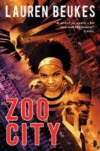 Next up is South African writer, Lauren Beukes. The central character of her latest novel, Zoo City [Purchase], is a woman, and she does have a boyfriend with whom she has a somewhat rocky relationship. However, this is peripheral to the plot for much of the book. In any case, Zinzi December is anything but a feeble romantic heroine; she is a nasty piece of work. Zinzi is a former journalist and recovering drug addict. Deeply in debt, she is trying to earn her life back by writing email scams for a crime boss. It is a good job that Beukes doesn’t do this in real life, because a lot of people would end up being suckered into giving away their money. Zinzi keeps her profitable sideline secret from her boyfriend, Benoît, who is a much more honorable person, but she can’t keep her past totally secret, because she has a monkey on her back.
Next up is South African writer, Lauren Beukes. The central character of her latest novel, Zoo City [Purchase], is a woman, and she does have a boyfriend with whom she has a somewhat rocky relationship. However, this is peripheral to the plot for much of the book. In any case, Zinzi December is anything but a feeble romantic heroine; she is a nasty piece of work. Zinzi is a former journalist and recovering drug addict. Deeply in debt, she is trying to earn her life back by writing email scams for a crime boss. It is a good job that Beukes doesn’t do this in real life, because a lot of people would end up being suckered into giving away their money. Zinzi keeps her profitable sideline secret from her boyfriend, Benoît, who is a much more honorable person, but she can’t keep her past totally secret, because she has a monkey on her back.
Well, not exactly a monkey; actually it is a sloth. And it doesn’t spend all of its time on her back. “Constant companion” might be a better way of describing its relationship to Zinzi. For she is one of the “animaled”. In the world of the book, people who have done terrible things in their lives acquire animal companions, and they end up living in slum suburbs such as Zoo City in Johannesburg. The upside of having an animal companion is that you get a magical power as well. Zinzi’s is finding things that are lost: by her or by other people. Running a “finding bureau” is her legitimate job, but as the book opens one of her clients is murdered. Slowly but surely, Zinzi comes to understand that the small time crooks that she associates with are by no means the meanest predators in the jungle, and with that realization comes an opportunity for redemption.
Some of the magic in Zoo City is based on “muti”, a traditional belief common in Southern Africa. The word muti is Zulu in origin, but the traditions appear to be common to many different native peoples of the region. In practice it appears to be similar to Chinese traditional medicine, or perhaps what we British would call “hedge magic”. The problem with it is that where Chinese traditional medicine can rely heavily on the body parts of powerful animals such as elephants and tigers, some muti utilizes the body parts of humans. The extent to which this is traditional and necessary to muti is by no means clear, if only because the practice is so easily sensationalized. Academic research I have read states clearly that the majority of practitioners and believers do not condone murder as a means of obtaining powerful muti, but tabloid newspapers will tell you a very different story. Zoo City straddles the divide, showing muti as a common part of African life, but also noting that those who lust for power are irresistibly drawn to bizarre magical practices. As such it makes clear that it is people who are evil, not beliefs. Beukes comments on the issue in this interview with Jason Baki.
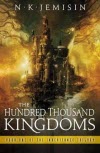 From a white South African woman writing about traditional African beliefs we move to an African-American woman writing fairly traditional Western fantasy. N.K. Jemisin’s debut novel, The Hundred Thousand Kingdoms [Purchase], came out earlier this year, and I loved it. The second book in the series, The Broken Kingdoms [Purchase], has just been released, and is also excellent, in a somewhat different way.
From a white South African woman writing about traditional African beliefs we move to an African-American woman writing fairly traditional Western fantasy. N.K. Jemisin’s debut novel, The Hundred Thousand Kingdoms [Purchase], came out earlier this year, and I loved it. The second book in the series, The Broken Kingdoms [Purchase], has just been released, and is also excellent, in a somewhat different way.
Some reviewers will tell you that the two books are unrelated save that they are set in the same world at around the same time. This isn’t really true. What is actually happening is that the story Jemisin is telling in the books is not the story of Yeine, the heroine of The Hundred Thousand Kingdoms, or the story of Oree, the heroine of The Broken Kingdoms, but rather the story of their world.
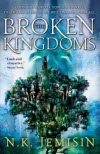 The Hundred Thousand Kingdoms tells a tale of war in Heaven. Yeine, plucked from obscurity to compete for the throne of an empire, is forced to take sides in an aeons-old war between gods. By the end of the book, the balance of power has changed. It is high-powered fantasy, and the more I think about it the more it reminds me most of Michael Moorcock’s Elric stories. The Broken Kingdoms takes place several years afterwards, by which time the changes in the divine power structure are being felt by ordinary people. This results in a very different book. Some of the characters may be the same, but I can’t imagine Moorcock ever writing a story about how the average Melnibonean in the street is affected by Elric and Yyrkoon’s dynastic squabbles.
The Hundred Thousand Kingdoms tells a tale of war in Heaven. Yeine, plucked from obscurity to compete for the throne of an empire, is forced to take sides in an aeons-old war between gods. By the end of the book, the balance of power has changed. It is high-powered fantasy, and the more I think about it the more it reminds me most of Michael Moorcock’s Elric stories. The Broken Kingdoms takes place several years afterwards, by which time the changes in the divine power structure are being felt by ordinary people. This results in a very different book. Some of the characters may be the same, but I can’t imagine Moorcock ever writing a story about how the average Melnibonean in the street is affected by Elric and Yyrkoon’s dynastic squabbles.
Of course Jemisin has a reason for what she does. For a start it enables her to make the occasional pointed comment about how religion works, and that it is the same even when the gods are demonstrably real. Here’s an example:
It wasn’t as chaotic as it might have been, though. Bright Itempas abhors disorder, after all, and the people who were most upset were the ones who had taken His tenets to heart. So quietly, peacefully, and in an orderly fashion, those people just stopped attending services at the White Halls. They kept their children at home for schooling, teaching them as best they could on their own. They stopped paying tithes, even though this had once meant prison or worse. They committed themselves to preserving the Bright, even as the whole world seemed determined to turn a little darker.
It is a problem that the Archbishop of Canterbury would recognize instantly. In Jemisin’s world too the theocracy does its best to cling on.
“What my husband means to say, Lady Oree, is that the Order, and through it the Arameri family, desperately hopes to convince the rest of mortalkind that the world is as it should be. That despite the presence of all our new gods, nothing else should change — politically speaking. That we should feel happy… safe… complacent.”
The gods might have had a sudden attack of social conscience, but their representatives in the mortal world are determined to carry on with an oppressive, authoritarian regime if they possibly can. If that involves terrorizing the populous, so be it.
The approach of the new book also allows Jemisin to tell a much more human story. While Yeine spent much of her time consorting with gods and princes, Oree is rather more ordinary, though not so ordinary as she first appears. She’s also blind, though able to see a little through magic. There is a risk involved here, though, because the less powerful the central character in a story that is still very much about gods, the more she becomes a pawn of the plot. The blindness angle I found particularly unconvincing, as some magical get-around was usually on hand to help Oree out when she really needed it. Reservations aside, however, Jemisin is a fine and thoughtful writer whose work I hope to enjoy for many years to come.
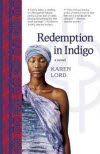 Moving back towards Africa, we encounter Redemption in Indigo by Karen Lord [Purchase]. The back cover blurb says that the book is about a woman escaping from her abusive husband, but don’t let that worry you, boys, because the book is not about that at all. The gluttonous Ansige is a pantomime villain who appears mainly at the start and end of the book. Paama is indeed the central character, but the real story is about her coming into possession of something called the Chaos Stick, and how its supernatural owner tries to persuade her to give it back.
Moving back towards Africa, we encounter Redemption in Indigo by Karen Lord [Purchase]. The back cover blurb says that the book is about a woman escaping from her abusive husband, but don’t let that worry you, boys, because the book is not about that at all. The gluttonous Ansige is a pantomime villain who appears mainly at the start and end of the book. Paama is indeed the central character, but the real story is about her coming into possession of something called the Chaos Stick, and how its supernatural owner tries to persuade her to give it back.
Lord is from Barbados, and unlike Beukes she is not trying to use actual African beliefs. The djombi spirits that are central to her book are not from any traditional belief system, as Lord confessed to Tia Nevitt in an interview. They are, however, inspired by traditional beliefs, as are other characters. Do you recognize anyone here?
First Rahid bought a drink for them both, and they grew more cheerful. Then Pei bought a drink for them both, and on that they grew indignant, telling tale after tale of the madness that was a man’s life in the service of Ansige. Then a third round arrived, and they did not know who was paying for it, but when they looked around, there was a friendly-looking spider of more than average size who raised his glass cheerfully in their direction and indicated with a wave that they should go ahead and drink up on his behalf. Heartened by such a gesture of diplomacy from a representative of the animal kingdom, they toasted him gladly and resumed their tales of woe to each other.
Yes, Redemption in Indigo is, amongst other things, an Anansi story. The arachnid trickster doesn’t go by that name in the book, but in all other respects he is the cheeky, playful fellow we have come to expect.
Lord tells the entire story as if she were a traditional storyteller sat in a hall with an audience around her. She frequently addresses us directly, and spends a lot of time making fun of the characters. It is beautifully done, and one of the most impressive first novels I have read in a long time. The book also asks very serious questions about the exercise of power. Paama is gifted with enormous magical power, and with it the ability to save lives, but she quickly learns that saving lives is by no means always a good thing to do.
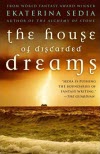 Ekaterina Sedia is not African, nor does she live in Africa. She is Russian by birth, but lives in New York, which gives her tale of a family come to the USA from Zimbabwe much more authenticity than it might have if written by someone without that immigrant experience. The House of Discarded Dreams [Purchase] starts calmly enough, with the American-born teenage daughter of the family, Vimbai, leaving the nest because she can no longer stand her mother’s obsessions with racial politics and goings on “back home”. She rents a room in a dilapidated house on the dunes of the New Jersey shore, and things get weird very quickly.
Ekaterina Sedia is not African, nor does she live in Africa. She is Russian by birth, but lives in New York, which gives her tale of a family come to the USA from Zimbabwe much more authenticity than it might have if written by someone without that immigrant experience. The House of Discarded Dreams [Purchase] starts calmly enough, with the American-born teenage daughter of the family, Vimbai, leaving the nest because she can no longer stand her mother’s obsessions with racial politics and goings on “back home”. She rents a room in a dilapidated house on the dunes of the New Jersey shore, and things get weird very quickly.
In no time Vimbai and her new housemates discover than a Psychic Energy Baby is living in their phone line. In a scene that might have come from a Tim Powers novel they exorcise it from the wires and name it Peb. Soon after the ghost of Vimbai’s grandmother comes to live with them, and before a handful of chapters are over the tide has risen and the house has floated out to sea. Fortunately it proves much bigger on the inside, though none of the vast landscapes accessible through different rooms appears to hold a helpful grocery store. Vimbai, and we readers, are asked to go along with this.
“Where are we?” Vimbai asked.
“Pantry,” Maya said, and shot her a smoldering look. “You really need to get to know the house, you know. It’s getting bigger every day.”
“But why?” Vimbai whispered, overwhelmed with the weight of accumulated disbelief. “What is happening to us?”
“Who knows?” Maya shrugged. “Who cares? Enjoy it while you can, why don’t you? There will be tons of boring shit in your life, okay? I promise.”
And so we follow along through stories of giant undead horseshoe crabs, anthropomorphic catfish and bloodthirsty medics. It is all delightfully bizarre, but ultimately a little too obviously allegorical. There is no reason for the world inside the house, save that it is a projection of the unconscious obsessions of Vimbai, Maya and their families. For a fantasy book, which relies on the acceptance of the reality of the fantasy world, this can be a serious problem. I still enjoyed reading the book, and found what it had to say about Zimbabwe fascinating, but I’m not sure it succeeded in whatever it was trying to do.
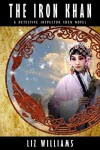 The final book I’d like to look at is The Iron Khan by Liz Williams [Purchase]. This has nothing to do with Africa, being set in various places in Asia. As most of you will know, the Inspector Chen books have been going for several years now, starting with Snake Agent [Purchase]. The books were originally published by Night Shade, but Williams broke with them earlier this year following a well-publicized business dispute. The novels are now available through Morrigan Books in the UK and the latest installment, The Iron Khan, has just been released on the Kindle. Paper versions will follow in due course, and it is a measure of my fondness for the Chen books that I bought the Kindle version immediately it became available.
The final book I’d like to look at is The Iron Khan by Liz Williams [Purchase]. This has nothing to do with Africa, being set in various places in Asia. As most of you will know, the Inspector Chen books have been going for several years now, starting with Snake Agent [Purchase]. The books were originally published by Night Shade, but Williams broke with them earlier this year following a well-publicized business dispute. The novels are now available through Morrigan Books in the UK and the latest installment, The Iron Khan, has just been released on the Kindle. Paper versions will follow in due course, and it is a measure of my fondness for the Chen books that I bought the Kindle version immediately it became available.
Because this is an ongoing series, the setting and characters are now very well developed and the new book is mostly plot. Williams has her characters rushing all over the place hunting down a mysterious goings on that appear to involve the titular undead Mongol warlord and the former Empress of Heaven, who is thoroughly nasty piece of work. The nature of the plot gives Williams plenty of opportunity to showcase her extensive knowledge of Central Asia, and also of 19th Century occultists (Nicholas Roerich is a guest character). While the plot does hinge on a magical book having disappeared from Heaven, and Chen being asked to locate it, the nature of the series has gone well beyond the original mystery theme and recent books all end up with some sort of magic-induced disaster about to destroy Singapore Three2. Like Jemisin, Williams generally finds some excuse to drop in a thoughtful comment about the nature of religion. Indeed, she’s been doing the whole “revolution in Heaven” thing for much longer.
If you are new to Inspector Chen I wouldn’t recommend The Iron Khan as you really need the background from the previous novels to understand what is going on, but do give Snake Agent a try, you may well end up hooked on the series.
I did also consider looking at The Loving Dead by Amelia Beamer, but that really is a love story, albeit one from which you are liable to catch all sorts of things far more worrying than Girl Cooties. Zombie sex is, of course, sufficiently gross an idea that it may well appeal to even the most girl-phobic teenage boy, but I have gone on for long enough this month so I shall leave that one for another time.
1. Girl Cooties is a concept that appears to be widespread in American schools. The idea is that feminine things carry ferociously infectious bacteria that will cause any male who comes into contact with them to become feminine.
2. Singapore Three is actually Hong Kong — in the world of the Chen books Singapore has franchised its government system to other cities.
Pingback: Cheryl's Mewsings » Blog Archive » Salon Futura #4